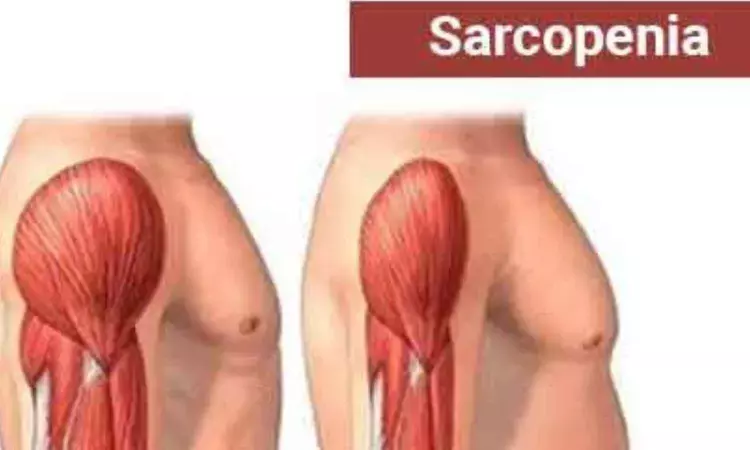- Home
- Medical news & Guidelines
- Anesthesiology
- Cardiology and CTVS
- Critical Care
- Dentistry
- Dermatology
- Diabetes and Endocrinology
- ENT
- Gastroenterology
- Medicine
- Nephrology
- Neurology
- Obstretics-Gynaecology
- Oncology
- Ophthalmology
- Orthopaedics
- Pediatrics-Neonatology
- Psychiatry
- Pulmonology
- Radiology
- Surgery
- Urology
- Laboratory Medicine
- Diet
- Nursing
- Paramedical
- Physiotherapy
- Health news
- Fact Check
- Bone Health Fact Check
- Brain Health Fact Check
- Cancer Related Fact Check
- Child Care Fact Check
- Dental and oral health fact check
- Diabetes and metabolic health fact check
- Diet and Nutrition Fact Check
- Eye and ENT Care Fact Check
- Fitness fact check
- Gut health fact check
- Heart health fact check
- Kidney health fact check
- Medical education fact check
- Men's health fact check
- Respiratory fact check
- Skin and hair care fact check
- Vaccine and Immunization fact check
- Women's health fact check
- AYUSH
- State News
- Andaman and Nicobar Islands
- Andhra Pradesh
- Arunachal Pradesh
- Assam
- Bihar
- Chandigarh
- Chattisgarh
- Dadra and Nagar Haveli
- Daman and Diu
- Delhi
- Goa
- Gujarat
- Haryana
- Himachal Pradesh
- Jammu & Kashmir
- Jharkhand
- Karnataka
- Kerala
- Ladakh
- Lakshadweep
- Madhya Pradesh
- Maharashtra
- Manipur
- Meghalaya
- Mizoram
- Nagaland
- Odisha
- Puducherry
- Punjab
- Rajasthan
- Sikkim
- Tamil Nadu
- Telangana
- Tripura
- Uttar Pradesh
- Uttrakhand
- West Bengal
- Medical Education
- Industry
Study Reveals Link Between Abdominal CT Use and Sarcopenia Diagnosis Among Older Adults

A new Harvey L. Neiman Health Policy Institute study found evidence that a new diagnosis of sarcopenia, a potentially reversible disease with low muscle mass and strength, often coincides with an abdominal CT study. Increasing opportunistic evaluation of abdominal CT scans could facilitate diagnosis of sarcopenia and ultimately improve patient care. The research, published today in the Journal of the American College of Radiology was based on nearly 3 million Medicare fee-for-service beneficiaries over the 2017-2022 period.
The term sarcopenia was first proposed in 1989 to describe the loss of muscle mass, but it did not receive an International Classification of Disease (ICD) code until 2016. Yet, “Since sarcopenia received an ICD code, its diagnosis has increased multifold from 0.01% of Medicare beneficiaries in 2017 to 0.07% in 2022,” stated Eric Christensen, PhD, Research Director at the Neiman Health Policy institute. “Despite this increase in sarcopenia’s diagnosis, it remains underdiagnosed compared to the estimated 10-27% of the elderly population with this disease.”
“Improving sarcopenia diagnosis has the potential to improve patient care through tailored interventions, such as exercise programs and nutritional support” said Robert Boutin, MD, Clinical Professor and Director of Musculoskeletal Imaging Fellowship at the Stanford University School of Medicine. “The challenge is that screening for sarcopenia, which typically starts with a patient questionnaire or gait speed assessment prior to imaging, is not routine as is screening for osteoporosis. Because CT is a reference standard for quantifying muscle mass, using CT scans patients are already receiving for the additional purpose of sarcopenia screening could further radiologists’ role in population health management.”
Unlike dual-energy X-ray absorptiometry, known as DXA scans, which are specifically for diagnosing osteoporosis, there is no procedure code for the express purpose of diagnosing sarcopenia. Given the inability to directly observe screening events, the researchers identified all abdominal CT scans received by Medicare beneficiaries diagnosed with sarcopenia. They then analyzed the temporal association of the CT examination and the sarcopenia diagnosis.
“We looked back from each patient’s sarcopenia diagnosis date and found that the abdominal CT rate climbed exponentially starting about 90 days beforehand and peaked on the diagnosis date,” said Dr. Christensen. “These findings show a clear temporal association between abdominal CT use and a sarcopenia diagnosis, but we cannot determine from these data whether this represents intentional or opportunistic use of CT for diagnosing sarcopenia.”
“Given the underdiagnosis of sarcopenia, the increasing number of CT scans and CT scanners, and the interest in implementing AI tools for sarcopenia diagnosis at the point of imaging care, opportunistic abdominal CT could play an important role in increasing the diagnosis of sarcopenia,” stated Dr. Boutin. “In this way, radiologists can increase their role in population health management and reduce disparities across socioeconomic groups while increasing the value to patients when abdominal CT scans are ordered.”
Reference:
Christensen, Eric W. et al., Sarcopenia Diagnosis Trends and Opportunistic Use of Abdominal CT Among Medicare Beneficiaries, Journal of the American College of Radiology.
Dr Kamal Kant Kohli-MBBS, DTCD- a chest specialist with more than 30 years of practice and a flair for writing clinical articles, Dr Kamal Kant Kohli joined Medical Dialogues as a Chief Editor of Medical News. Besides writing articles, as an editor, he proofreads and verifies all the medical content published on Medical Dialogues including those coming from journals, studies,medical conferences,guidelines etc. Email: drkohli@medicaldialogues.in. Contact no. 011-43720751


